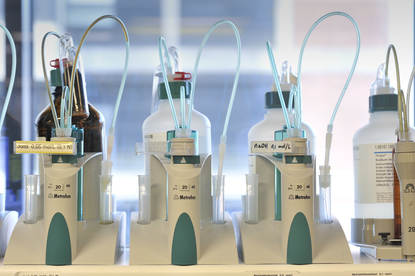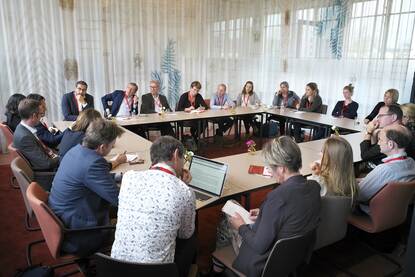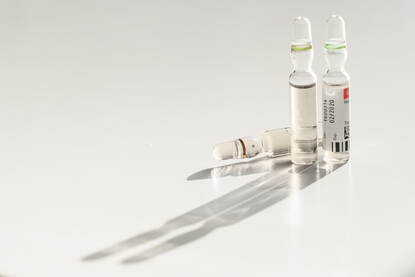Animal testing is still part of regulatory guidelines in pharmaceutical development and production. A world without laboratory animals is the endeavour the Medicines Evaluation Board is working towards. Jan Willem van der Laan (PhD), Peter Theunissen (PhD)and Peter van Meer (PhD) and their colleagues at the MEB are trying to contribute to reduction, refinement and replacement in animal studies for drug development wherever possible.
“What we always try to do is to look back into the data we have in registration files. And in retrospect, we try to assess: were those animal studies necessary? Did they provide useful information?”, explains Jan Willem van der Laan, non-clinical senior assessor at MEB. “Based on that knowledge, we look into certain topics or areas of research to see if we can advance them”, Peter van Meer, non-clinical assessor at the MEB, adds. “Use of monkeys in animal studies in research for example was a topic we have studied previously, and which now continues, together with the European partnership for alternative approaches to animal testing (EPAA) and NC3Rs (National centre for the Replacement, Refinement & Reduction of Animals in Research). We researched the use of monkeys in studies for recombinant products, especially monoclonal antibodies. A high percentage of monkeys is used for these type of studies, since these are usually the only non-human species that give a pharmacological response.”
“Looking back we can conclude that over 30 years of antibody development these studies have no added value”, Peter continues. “There is a pharmacological response, indeed. And that can be an adverse overreactive effect, or we see an immune response. The first is known and expected, and the latter response is not translatable to the human population. Therefore we can question the use of monkeys in these studies, which we argued in a publication (Van Meer, 2013)).”
The data used at the MEB comes from registration files at the MEB. “They’re obviously based on products that are intended to go to the market and already considered safe”, Peter van Meer admits. “Data from compounds that haven’t made it to registration can also be very interesting with regard to evaluating the use of animal studies. We understand that pharmaceutical companies are quite reluctant to hand over such data, due to legal implications. Fortunately, as a not-for-profit organisation NC3Rs can provide a solution: they collect research data and anonymise it, making it available for research.”
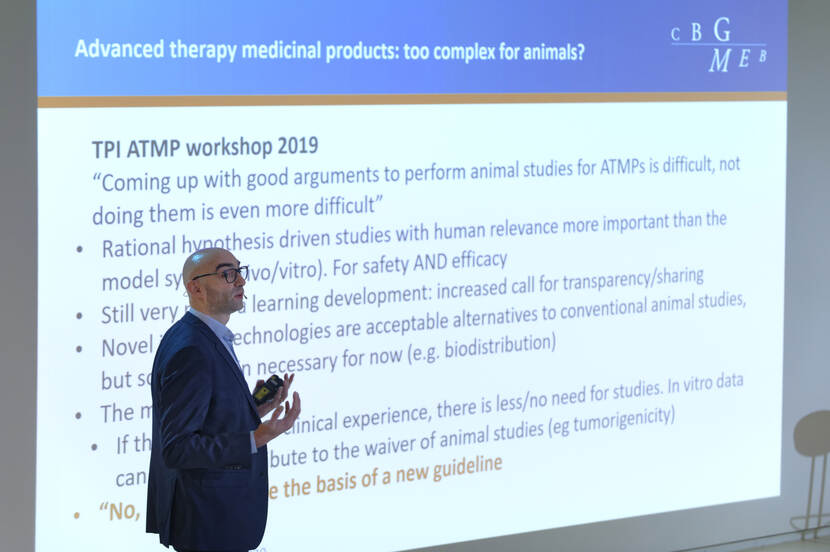
NC3Rs will provide us with access to study data of pharmaceutical companies for products that have not reached the market. Peter van Meer: ”From that we can research the added value of those studies. Our hypothesis is that, at minimum, there are several classes of antibodies that won’t benefit from long term study data in animals, and where short term studies combined with in vitro or in silico models can provide us with sufficient and correct data.”
ICH S5(R3) milestone
In 2019, an international milestone was reached in decreasing animal testing, when for the first time in many years one of the guidelines of the ICH (International Council for Harmonisation of Technical Requirements for Pharmaceuticals for Human Use) was updated. This guideline is currently being implemented by the different global regions (including EU, USA and Japan). “Ever since the thalidomide situation in the early sixties, two animal models had been required in reproductivity toxicity testing”, explains Peter Theunissen (non-clinical assessor at the MEB). “Traditionally rat ánd rabbit studies are conducted. With others, we assessed that the predictive value of both models is similar in over 70% of reproduction studies. Based on that knowledge, the ICH S5 guideline on reproductivity toxicity assessment could be updated: in phase I and II studies, only one animal model is sufficient, when combined with advanced in vitro assays. In addition, alternative assays can be sufficient for certain indications and medicines that are structurally similar to known reproductive toxicants. A change of regulation that leads to a tremendous reduction in the use of animals.”
The ICH S5 guideline focuses on reproductive toxicity. Another guideline, ICH S1, concerns carcinogenicity. “For decades, since the early seventies, those studies were also conducted in two models, mostly rat and mouse. But what do the mouse models actually add?”, says Jan Willem. “We’ve conducted systematic reviews in existing data. And already in 1995 we have concluded that, according to European standards, the mouse models don’t add value to the data interpretation. Our recent research has shown that it is possible to use pre-existing evidence to predict carcinogenicity, which opens the discussion whether animal studies can be reduced in an earlier development phase.” Jan Willem: “The difficulty is: the US authorities like the FDA use different standards, in which they dó see added value in a second model. That issue is now being discussed internationally at the ICH. We are considering writing an addendum to the ICH S1-guideline, focusing on carcinogenicity studies.”
Carcinogenicity testing is important in the last phase (phase 3) of pharmaceutical development, but it also has a prominent broader role, for instance in pesticides and other products. “In that perspective, the US Environmental Protection Agency (EPA) has set a bold statement, to eliminate all mammal study requests and funding by 2035. The EPA is more provocative than the FDA in that area, and we’re not sure as to how realistic that ambition really is, but it does show that they are expecting alternatives.”
In the Netherlands, the MEB participates in the TPI initiative (‘Transitie Proefdiervrije Innovatie’; Transition to Animal Study Free Innovation). Industry, government, scientists and animal welfare organisations partner up to stimulate the Dutch ambition to be one of the forerunners in the field of alternatives for animal testing. The MEB organized an Advanced Therapy Medicinal Products (ATMP) workshop, setting up guidelines for this specific area of research, aiming towards animal free testing in this field, where gene and cell therapy products are being used in treatment.
Stemming from his research position at Utrecht University, Peter van Meer also participates in TPI. “We are looking into the poor translatability of drug efficacy in different animal models of disease. Obvious reasons that have already been identified by others are plain and simple publication pressure, and substandard execution of the animal experiment. But also, and that is the focus of our research, is the question if the right model is always used and whether a method can be developed to identify this.” Jan Willem: “It is a good thing that more and more animal experiments committees ask why certain animal models were chosen and they ask for a motivation or systematic review into the different available models.”
From small molecules to whole cells
It’s not that animal tests haven’t proven their value in predicting side effects in the past decades. They have been the best system available in the past. “However, animals are and always will be a black box, of which the predictive value has been challenged in science in the past decades”, Peter van Meer explains. “Add to that the evolution in pharmaceutical development in the past decades: coming from small molecules, therapeutics have evolved to larger, biological molecules. And beyond that, for example to gene or cell therapies. The value of testing those ‘human-derived’ products in the animal models gives extra stuff to think about.”
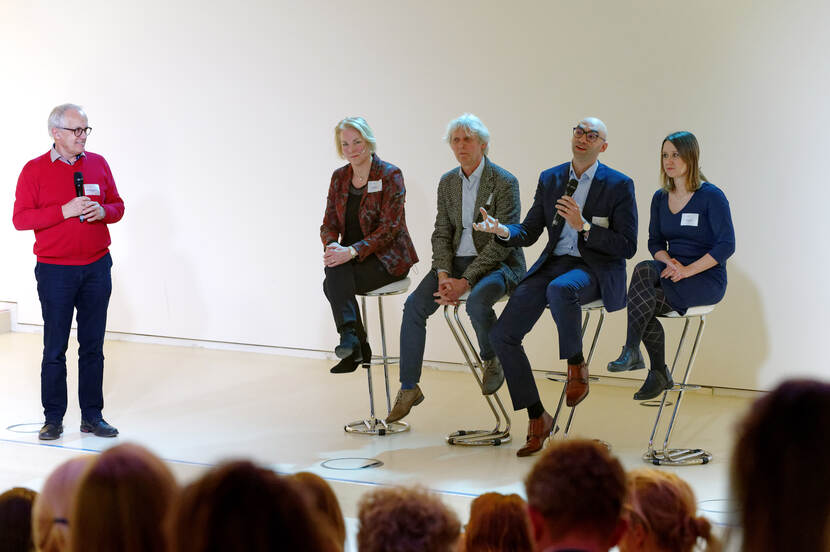
Since we are already questioning the translatability of small molecules from animal models to human, how informative is a safety evaluation of ATMP’s in animals? “How realistic and predictive will it be to test effects of human stem cells in another species”, Jan Willem explains. “To innovate, the industry will need to be able to conduct proof-of-concept studies. But does that always require animal studies? There definitely is a big need for guidelines in this field.” Peter van Meer agrees. He thinks it is difficult to come up with good arguments in favour of animal testing for ATMP’s. “We think ‘No, unless’ should be the basis of a new guideline for ATMP tests. That should be the standard for all future non-clinical guidelines and revisions.”
Jan Willem: “Look at cell therapy. The use of pluripotent stem cells always sparked the concern of introducing tumors. This is connected to the request to test this in mice. We should look into an in vitro method of predicting or screening whether that will happen. Mouse models have never given reliable results. The complex nature of these new therapies and the lack of a globally accepted consensus on evaluation of tumorigenicity led us to partner with the Health and Environmental Sciences Institute (HESI) in Washington. Together we were able to conduct international studies. We have published a position paper (SOURCE), which demonstrates that mouse models are not necessary. We recommended a case-by-case approach. Again: ‘no animal tests, unless’….”
In conclusion, the MEB is working hard on the 3R’s, together with international partners. “To the outside world it might look like it’s all moving slowly”, Jan Willem realises. “It’s hard to explain, but many countries and organisations are involved in improving and updating guidelines. We are actually doing a lot, especially in the Netherlands. We try to think and act progressively, we look ahead and we feel an urge to take other countries along in our points of view. The Dutch ambition to become a ‘world leader’ in innovation without the use of laboratory animals is quite well known. So are we moving slowly? It may seem that way, but we are working steadily towards that ambition: a world without laboratory animals.”


